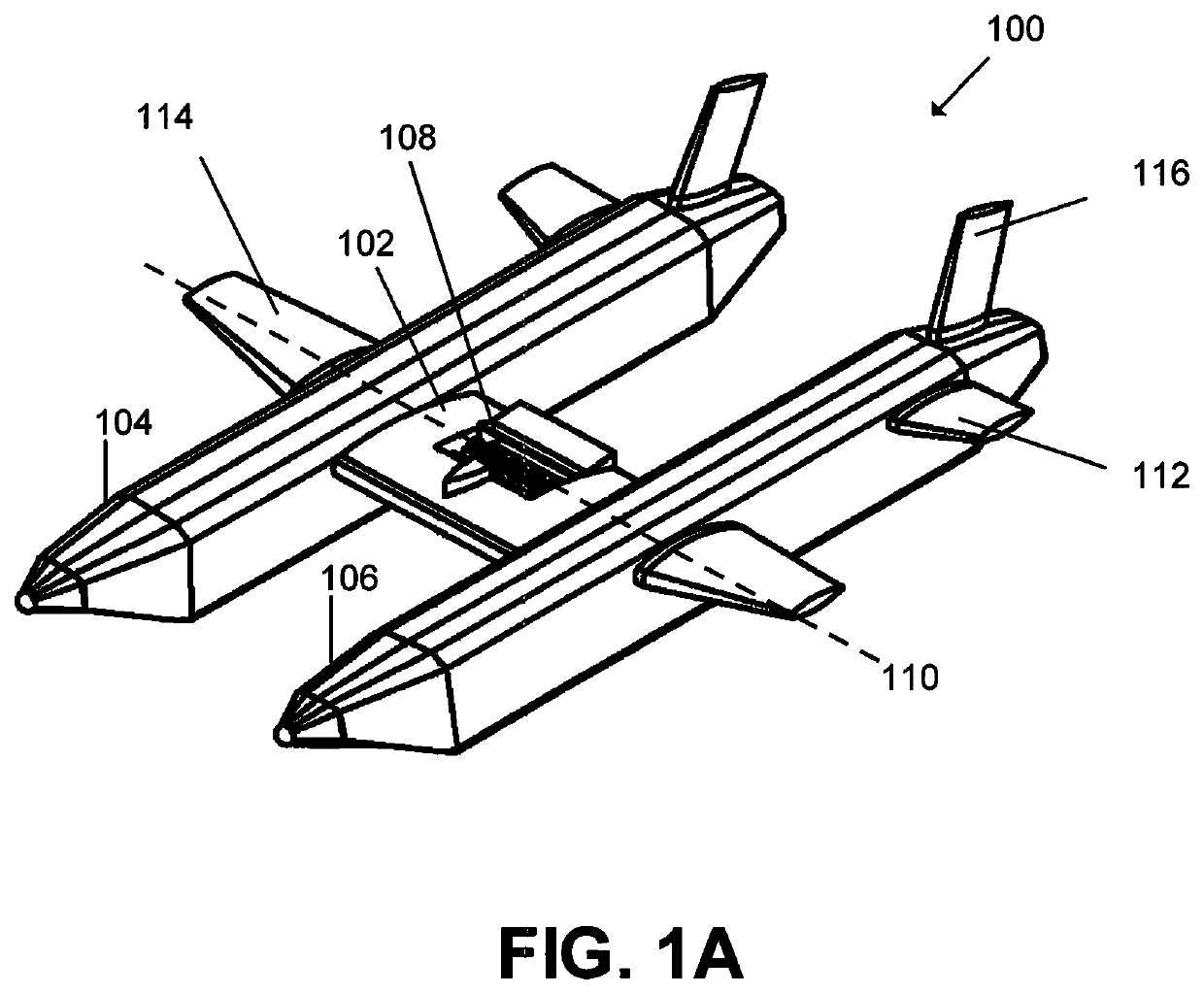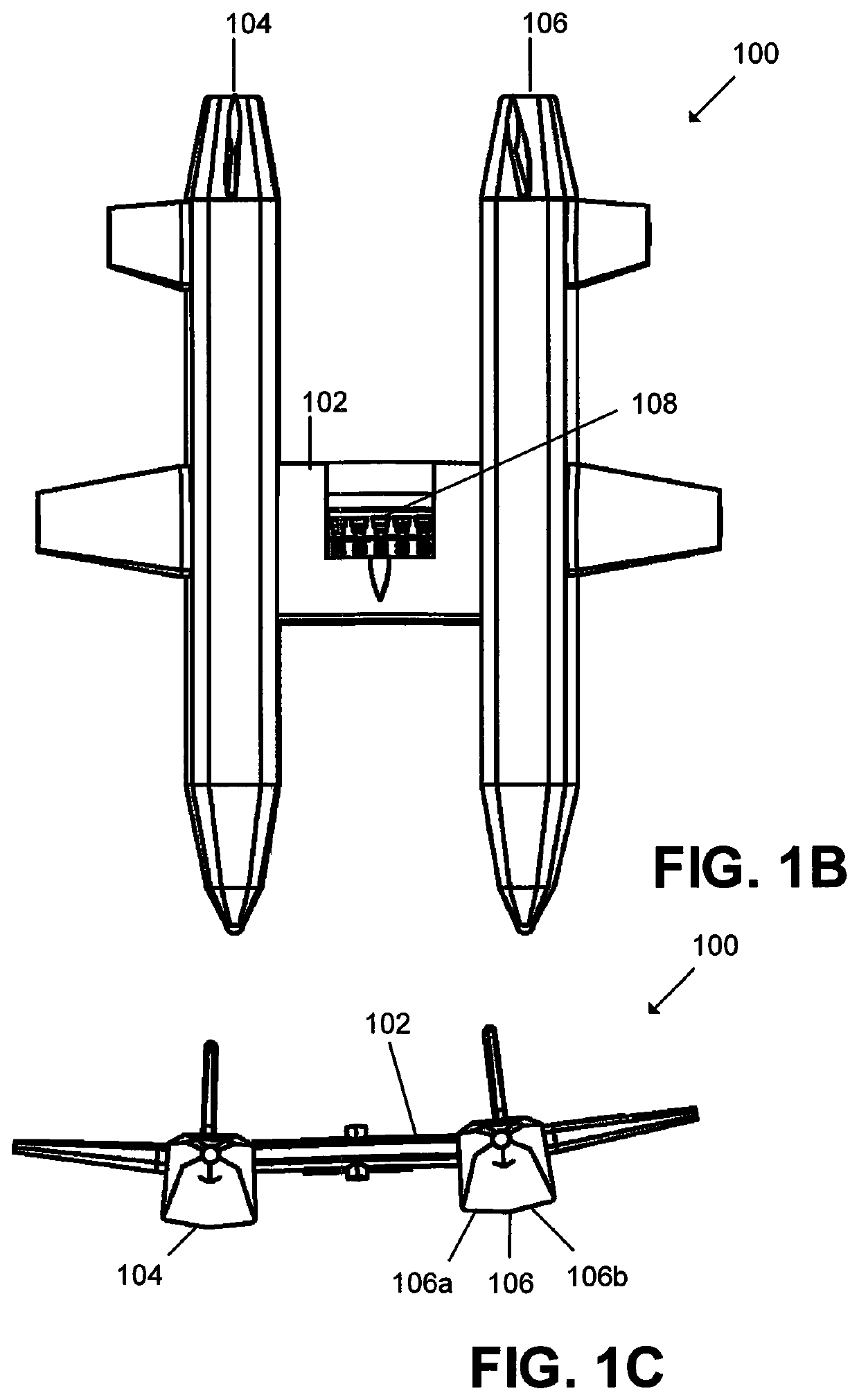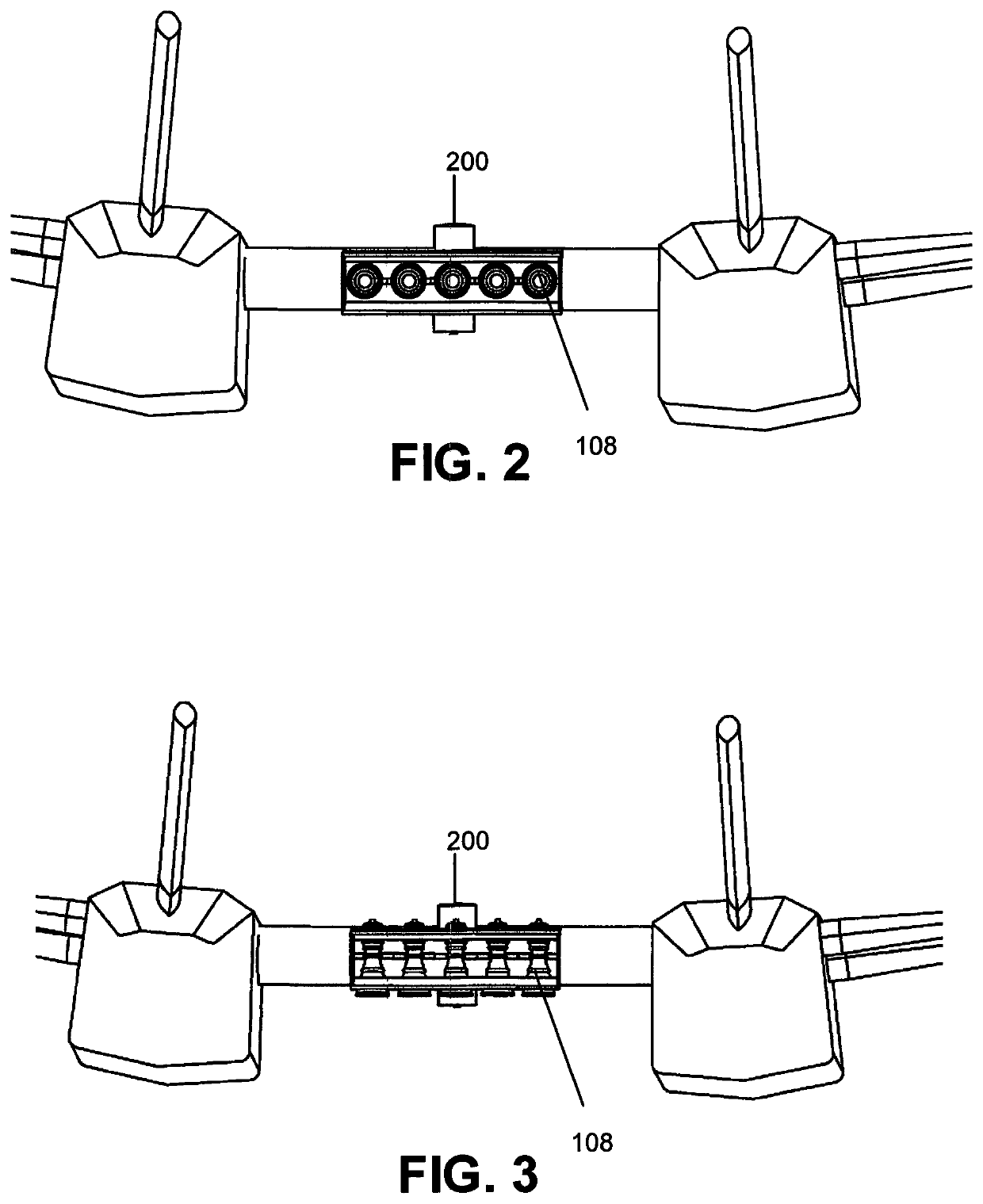Center of gravity propulsion space launch vehicles
a space launch and center of gravity technology, applied in the field of rocket-propelled space launches, can solve the problems of increasing the number of personnel participating in the work, increasing the cost of each flight, increasing the cost of operation, etc., and achieve the effect of increasing the heat load during reentry
- Summary
- Abstract
- Description
- Claims
- Application Information
AI Technical Summary
Benefits of technology
Problems solved by technology
Method used
Image
Examples
Embodiment Construction
[0030]The present disclosure relates to aerospace vehicle(s) suitable for carrying substantial payload beyond the Earth's atmosphere and for return therefrom. Also disclosed is a technique of combining at least two aerospace vehicles for the horizontal launch from the surface of the earth of large payloads to earth orbital altitudes and beyond. Moreover, the present disclosure provides a logistical support method for constructing and launching vehicles from the surface of the ocean and recovery on ocean surface.
[0031]FIG. 1A, FIG. 1B and FIG. 1C illustrate a primary space launch vehicle 100 design and operational parameters of a system that can be a reusable or expendable system for horizontal takeoff and landing is described. The system can be launched from land on track or runway or from the surface of the ocean where it requires minimum launch infrastructure by eliminating pad and gantry and other conventional landing pad systems.
[0032]The vehicle 100 comprises a center wing sect...
PUM
 Login to View More
Login to View More Abstract
Description
Claims
Application Information
 Login to View More
Login to View More - R&D
- Intellectual Property
- Life Sciences
- Materials
- Tech Scout
- Unparalleled Data Quality
- Higher Quality Content
- 60% Fewer Hallucinations
Browse by: Latest US Patents, China's latest patents, Technical Efficacy Thesaurus, Application Domain, Technology Topic, Popular Technical Reports.
© 2025 PatSnap. All rights reserved.Legal|Privacy policy|Modern Slavery Act Transparency Statement|Sitemap|About US| Contact US: help@patsnap.com



